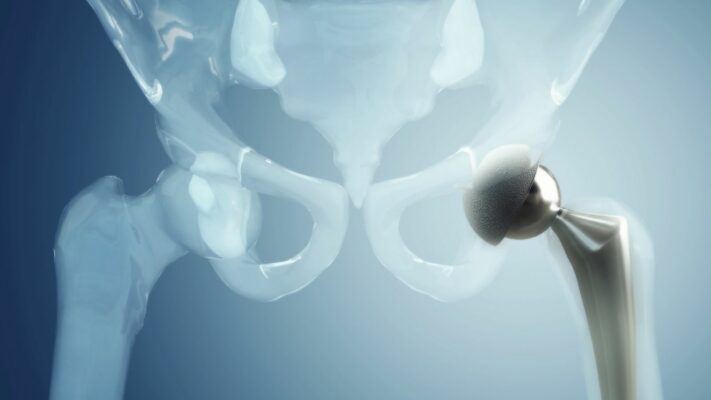Prof. Dr. Murat Demirel, one of the best orthopedic doctors performing shoulder arthroscopy in Ankara, stands out with his modern surgical techniques in diagnosing and treating many conditions that cause pain, restricted movement, and structural disorders in the shoulder joint. Shoulder arthroscopy is a minimally invasive method where problems inside the joint are treated with the help of a camera and special surgical instruments through small incisions. Thanks to this technique, patients benefit from less pain, shorter recovery time, and a quicker return to daily life. Among hospitals in Ankara performing shoulder arthroscopy, Prof. Dr. Demirel provides personalized surgical plans in centers equipped with advanced medical technology and high hygiene standards.
Before surgery, Prof. Dr. Demirel makes a detailed evaluation to precisely determine the cause of the problem in the joint, and he closely follows his patients after surgery. With post-operative recommendations, the recovery process after shoulder arthroscopy becomes safe, fast, and permanent. In addition, he provides transparent and up-to-date information about shoulder arthroscopy costs in Ankara, helping his patients make informed decisions. You can also contact us immediately to protect your shoulder health, reduce pain, and improve your mobility by scheduling an appointment.
| Surgery Name | Shoulder Arthroscopy |
| Application Area | Shoulder joint |
| Purposes of Use | Rotator cuff tears, labral tears, shoulder impingement syndrome, intra-articular arthritis, frozen shoulder, tendon inflammations |
| Surgical Method | Arthroscopic (with small incisions and camera-assisted) |
| Type of Anesthesia | General anesthesia or regional (interscalene block) |
| Operation Duration | Usually 1–2 hours |
| Hospital Stay | Same-day discharge or 1-night stay |
| Recovery Process | 4–6 weeks varying recovery; physiotherapy may be required |
| Complications | Infection, nerve injury, stiffness, bleeding, arthrofibrosis |
| Advantages | Small incisions, less pain, shorter recovery time, less scarring |
| Alternative Methods | Open surgery, conservative treatment (physical therapy, medications, injections) |


Prof. Dr. Murat Demirel
Orthopedics and Traumatology Specialist
Orthopedics Specialist Prof. Dr. Murat Demirel was born in Ankara in 1974. He completed his primary education at Ankara Kavaklıdere Primary School and his secondary and high school education at Ankara Atatürk Anatolian High School. Dr. Demirel graduated from Ankara University Faculty of Medicine in 1998 and completed his residency in Orthopedics and Traumatology at Ankara Numune Training and Research Hospital, 1st Orthopedics and Traumatology Clinic, in 2004.
PhD
Ankara University Institute of Health Sciences
Specialization
Ankara Numune Training and Research Hospital, 1st Orthopedics Clinic
Medical School
Ankara University Faculty of Medicine
Yazı İçeriği
What is Shoulder Arthroscopy?
You can think of shoulder arthroscopy as “keyhole surgery.” In the past, a large incision was required to see and repair a problem in the shoulder joint, but now this procedure can be performed almost as if looking inside through a keyhole. The origin of its name also reflects this; in Greek, “arthro” means joint, and “skopein” means to look or observe. So, in the literal sense, we are “looking into the joint.”
During this procedure, a thin instrument about the thickness of a pen, called an arthroscope, equipped with a high-resolution camera and a strong light source, is used. Through one or more small incisions about half a centimeter in size, this camera is placed inside the shoulder. The camera projects magnified images of your shoulder joint onto a screen in the operating room. This allows us to see every structure inside your joint – tendons, cartilage, ligaments, bones – in great detail.
Once the diagnosis is confirmed, if repair is needed, specially designed miniature surgical instruments are inserted through other small incisions. With these instruments, we can stitch a torn tendon, repair damaged cartilage, or shave a bony protrusion causing impingement. All of these repairs leave only a few small stitch marks on the skin. This minimally invasive approach, compared to traditional open surgery, provides patients with much greater comfort – less pain, lower risk of infection, and a much faster recovery process.
For Which Conditions Can Shoulder Arthroscopy Provide a Solution?
Shoulder arthroscopy is considered when stubborn shoulder problems cannot be resolved with non-surgical methods such as medications, physical therapy, or injections. Surgery is usually the last resort, but in some cases, it is the most accurate and permanent solution. The main conditions that can be treated with shoulder arthroscopy are:
- Rotator cuff tears
- Shoulder impingement syndrome
- Labral tears (SLAP lesion, Bankart lesion)
- Recurrent shoulder dislocations (shoulder instability)
- Frozen shoulder (adhesive capsulitis)
- Biceps tendon problems
- Loose bodies inside the joint (cartilage or bone fragments)
- Acromioclavicular (AC) joint arthritis
- Synovitis (inflammation of the joint lining)
Let’s elaborate on a few of the most common conditions from this list. Rotator cuff tears occur when the group of tendons that move and stabilize the shoulder wear out or tear due to sudden movements. Especially lifting the arm overhead or throwing becomes painful. With arthroscopy, the torn tendon is reattached to the bone using special sutures and tiny screws called anchors.
Shoulder impingement syndrome occurs when the tendons of the shoulder get pinched between the upper bone (acromion) and the shoulder during arm elevation. Over time, this can cause swelling, wear, and even tears in the tendons. During arthroscopy, the bony protrusions causing the impingement are shaved with a special tool (acromioplasty) to create more space for the tendons.
Labral tears often occur after shoulder dislocations or repeated overuse. The labrum is a cartilage ring surrounding the socket of the shoulder joint that helps keep it stable. When torn, it causes catching, instability, and pain. With arthroscopy, the torn labrum is repaired with special sutures, restoring stability to the joint.
What is the Path Leading to Shoulder Arthroscopy Surgery?
When you consult an orthopedic specialist with shoulder pain, you are not immediately told “you need surgery.” The path to shoulder arthroscopy is actually a process of evaluation and elimination. The goal is to find the most accurate, effective, and least invasive treatment for you.
The first step is listening to your story. When did the pain start? What type of pain is it; sharp or aching? Which movements increase or decrease it? Does it wake you at night? Have you had any previous injuries? The answers to these questions give us the first clues about the source of the problem.
The second step is a detailed physical examination. During this examination, we evaluate your shoulder’s range of motion, muscle strength, tender points, and specific tendons or ligaments with special tests. In addition to the active movements you perform, we also assess passive movements guided by us to evaluate the condition of your joint.
If the examination findings suggest a specific problem, the third step is imaging. The first test usually requested is an X-ray. X-rays show bone structures, arthritis, or obvious dislocations. However, since most shoulder problems involve soft tissues such as tendons, ligaments, or cartilage, the “gold standard” test is Magnetic Resonance Imaging (MRI). MRI clearly shows the location, size, and quality of the tissue, helping us shape your treatment plan.
Contact us for detailed information and an appointment!
What Should Be Done Before Shoulder Arthroscopy?
Once the decision for surgery has been made, preparing both physically and mentally for this process directly affects the success of the surgery and your post-operative comfort. This preparation includes a few simple but important steps.
First, there are the medical preparations required before surgery. Your surgeon or anesthesiologist will evaluate your overall health condition. Here are some general points to keep in mind during this process:
- Blood-thinning medications (Aspirin, Coumadin, etc.) may need to be discontinued or adjusted a certain period before surgery.
- Certain medications that affect the immune system, such as rheumatism drugs, may need to be paused.
- It is vital to inform your doctor about all the medications, vitamins, and herbal supplements you are using.
- You must not eat or drink anything (including water) after midnight before surgery.
- Since smoking slows down blood circulation and tissue healing, it is strongly recommended to quit at least a few weeks before surgery.
There are also some practical preparations that will make your life easier after surgery. Remember, you will have difficulty using one arm for a while. You can make a few adjustments at home to make this period more comfortable:
- Arrange for a relative to pick you up from the hospital and help you during the first day.
- Place frequently used items (glasses, plates, remote control, etc.) within easy reach at waist height.
- Prepare loose, front-buttoned, or zippered clothes that are easy to put on and take off.
- Have ice packs or gels ready in the freezer.
- If you live alone, prepare some easy-to-cook meals in advance and store them in the freezer.
These simple preparations will reduce stress in the post-operative period and allow you to focus solely on healing.
What to Expect on the Day of Shoulder Arthroscopy Surgery?
For many patients, the day of surgery is both exciting and stressful. Knowing what will happen can help you manage this anxiety. Let’s go step by step through what you can expect on that day.
You are usually asked to arrive at the hospital a few hours before your scheduled surgery time. After admission procedures, you are taken to your room. Here you will change into a surgical gown, and the nurses will insert an IV line. Your surgeon and anesthesiologist will visit you to explain the procedure one last time, answer your questions, and mark the shoulder that will undergo surgery.
In the operating room, the anesthesia team will greet you. Shoulder arthroscopy can generally be performed under two types of anesthesia: general anesthesia or regional anesthesia. In general anesthesia, you will be completely asleep throughout the surgery. In regional anesthesia (interscalene block), an injection near your neck or shoulder numbs the shoulder and arm completely. You may remain conscious during this time, or you may be given a sedative to make you feel drowsy. Often, both methods are combined (regional block + mild general anesthesia) to ensure your comfort during surgery and provide early post-operative pain relief.
Once anesthesia takes effect, your shoulder area will be cleaned with antiseptic solutions to prevent infection and covered with sterile drapes. As explained earlier, a few small incisions (portals) are made: one for the camera and others for surgical instruments. The joint is filled with sterile fluid for a clearer view. Under the guidance of the magnified images on the screen, the repair process begins. This may include stitching a torn tendon, repairing cartilage, or shaving bone. Depending on the complexity of the repair, the procedure usually takes 1 to 2 hours. When finished, the small incisions are closed with one or two stitches and covered with small dressings. You are then taken to the recovery room until the anesthesia wears off.
What is the Recovery Journey After Shoulder Arthroscopy?
Recovery after shoulder arthroscopy is just as important as the surgery itself, and your active participation is the key to success. This is not a sprint but a marathon. Patience, care, and commitment to physical therapy will lead you to a healthy shoulder at the end of this journey.
First 24-48 Hours: The main focus during this period is pain control and rest. Once the anesthesia wears off, you may experience pain. It is very important to take the prescribed painkillers regularly. Your arm will be supported in a sling to protect the repair. Applying ice packs (15-20 minutes wrapped in a cloth) regularly to your shoulder is the most effective way to reduce swelling and pain.
First Few Weeks: During this period, you may need to wear the sling continuously, including while sleeping, as instructed by your doctor. Dressings are usually changed a few days later, and stitches are removed 10-14 days after surgery. It is very important not to put stress on your shoulder during this time. Things you must avoid include:
- Pushing, pulling, or lifting with the operated arm
- Removing the sling without your doctor’s approval
- Driving
Physical therapy usually begins with passive movements during this period. In other words, your therapist moves your arm safely to prevent stiffness. You may also be given simple exercises to do at home, such as wrist and elbow movements.
First Few Months (Active Rehabilitation Period): About 4-6 weeks later, once the repaired tissues gain sufficient strength, you move into the active stage of physical therapy. At this stage, you begin moving your arm yourself and gradually strengthening it. This is the most critical period of recovery. Under the guidance of your physiotherapist, you will follow a gradually progressive exercise program aimed at restoring your shoulder’s range of motion, strength, and coordination. Commitment to this exercise program is essential for treatment success.
Return to Normal: Full recovery may take 6 months to 1 year depending on the type of surgery and personal factors. While you may return to a desk job within a few weeks, returning to physically demanding jobs or sports can take months. The decision to return to sports should only be made after a complete evaluation of your shoulder’s strength and function by your surgeon and physiotherapist.
What Are the Possible Risks of Shoulder Arthroscopy and How Are They Managed?
As with any surgery, shoulder arthroscopy also carries some potential risks and complications, although rare. Being aware of these risks helps you approach the process more consciously. Remember, your surgical team takes all precautions to minimize them.
Possible risks include:
- Infection
- Shoulder stiffness (Frozen shoulder)
- Nerve or vessel injury
- Blood clot (Deep vein thrombosis)
- Failure of the repair or re-tear
- Anesthesia-related complications
- Chronic pain
Let’s explain these risks further. Thanks to the minimally invasive nature of arthroscopic surgery, the risk of infection is quite low (less than 1%). Preventive antibiotics during surgery and strict adherence to sterilization rules further reduce this risk. Shoulder stiffness is one of the most common complications but is largely preventable. The cause is usually not moving the arm due to pain after surgery. This is why early, correct physical therapy is critical. Nerve injury is very rare and usually temporary; it may cause numbness in the fingers due to nerve stretching during surgery. Failure of the repair is more likely in very large or poor-quality tendon tears or when the patient does not follow rehabilitation rules after surgery.
When should you worry and call your doctor after surgery? If you notice any of the following symptoms, you should immediately contact your doctor:
- Severe pain increasing and not controlled by medication
- Foul-smelling, yellow-green discharge from the wound
- Fever over 38°C
- Increasing redness, swelling, and warmth at the surgical site
- New and persistent severe numbness or discoloration in the hand or arm
- Shortness of breath or chest pain (in this case, go to the emergency room immediately)
Life After Shoulder Arthroscopy and Long-Term Expectations
Once surgery and rehabilitation are completed, the most common question patients have is: “Will my life be the same as before?” The success rates of shoulder arthroscopy are quite high. The vast majority of patients report significant pain reduction and clear improvement in shoulder function compared to before surgery. The definition of “success” varies from person to person; for an office worker, success may mean being able to work pain-free at a computer, while for a volleyball player, it may mean being able to spike. Therefore, setting realistic goals with your surgeon before surgery is very important.
Surgery repairs the damaged structure, but long-term protection of your shoulder health is in your hands. Even after recovery is complete, there are some points to keep in mind to protect your shoulder and prevent re-injury:
- Make the strengthening and stretching exercises you learned in physical therapy a part of your daily life.
- Avoid lifting heavy loads suddenly and uncontrollably.
- Pay attention to proper technique in jobs or sports that require repetitive overhead activity.
- Listen to your body; stop any activity that causes pain.
- Maintain good posture; slouching negatively affects shoulder mechanics.
When performed on the right patient, at the right time, and with the right technique, shoulder arthroscopy is an extremely effective and satisfying treatment method. It has a very high potential to relieve your pain and restore you to an active life. On this journey, your surgeon and physiotherapist will be your biggest supporters, while your patience and commitment to treatment will be your strongest medicine.
Contact us for detailed information and an appointment!
Frequently Asked Questions
What is shoulder arthroscopy and in which cases is it performed?
Shoulder arthroscopy is a minimally invasive surgical procedure performed through small incisions using a camera and fine surgical instruments to examine and treat the inside of the shoulder joint. It is used to treat rotator cuff tears, shoulder impingement syndrome, labral tears, cartilage and ligament injuries, recurrent shoulder dislocations, frozen shoulder, and loose bodies inside the joint.
What are the advantages of shoulder arthroscopy?
Compared to open surgery, it is performed with smaller incisions, recovery is faster, and the risks of infection and bleeding are lower. Post-operative pain is usually milder, and patients return to daily life more quickly.
How is the surgery performed and how long does it take?
It is usually performed under general anesthesia or nerve block. Several small incisions are made around the shoulder, and a camera and surgical instruments are inserted. Damaged tissue is repaired, cleaned, or removed if necessary. The procedure takes between 30 minutes and 2 hours depending on the intervention.
What is the recovery process after shoulder arthroscopy?
Patients are usually discharged the same day or the next day. A sling is used during the first days. Physical therapy and exercise programs are very important. Full recovery and regaining shoulder function may take from a few weeks to several months.
Are there risks associated with shoulder arthroscopy?
As with any surgical procedure, there are risks such as infection, bleeding, or injury to blood vessels or nerves. However, the risks are very low in arthroscopy. With proper surgical technique and good rehabilitation, complication rates are minimal.
Who is not suitable for shoulder arthroscopy?
It may not be suitable for elderly patients with advanced arthritis in the shoulder joint, patients with serious vascular or nerve diseases, or those with significant health issues.
Will there be pain after surgery?
Mild to moderate pain may occur during the first days. This pain can usually be easily controlled with painkillers. With physical therapy, pain and stiffness decrease rapidly.
Why is physical therapy important after surgery?
Physical therapy is very important to restore shoulder range of motion and muscle strength, and to prevent stiffness and adhesions in the joint. Personalized exercise programs increase the chances of success.
When can one return to sports or work after shoulder arthroscopy?
Those working in light jobs can usually return to work within a few weeks. For physically active individuals who heavily use their arms, this period may take 2-3 months. Return to sports depends on the surgery performed and usually takes 2-6 months.
Can the same problem recur after shoulder arthroscopy?
With proper treatment and rehabilitation, shoulder strength and mobility are largely restored. However, if there is repeated trauma, inadequate rehabilitation, or structural issues, symptoms may recur.




